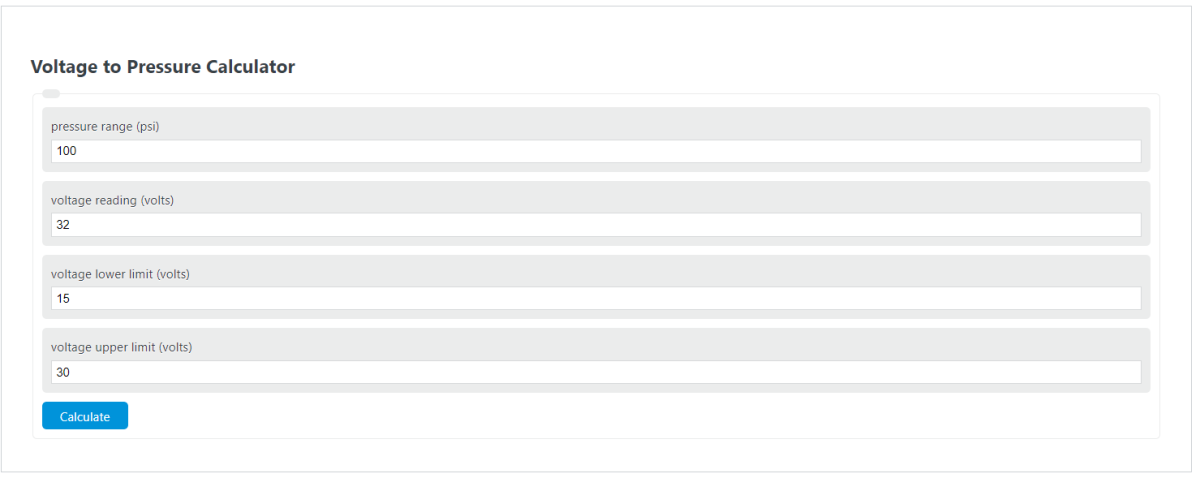Enter the pressure range (psi), the voltage reading (volts), the upper voltage limit (volts), and the voltage lower limit (volts) into the calculator to determine the Pressure From Voltage.
- All Pressure Calculators
- Weight to Pressure Calculator
- Torque to Pressure Calculator
- Pump Pressure Calculator
- Voltage to Energy Calculator
Pressure From Voltage Formula
The following formula is used to calculate the Pressure From Voltage.
P = PR * (Vr - VL) / (Vu - VL)
- Where P is the Pressure From Voltage (psi)
- PR is the pressure range (psi)
- Vr is the voltage reading (volts)
- VL is the voltage lower limit (volts)
- Vu is the voltage upper limit (volts)
How to Calculate Pressure From Voltage?
The following example problems outline how to calculate the Pressure From Voltage.
Example Problem #1
- First, determine the pressure range (psi). In this example, the pressure range (psi) is given as 100 .
- Next, determine the voltage reading (volts). For this problem, the voltage reading (volts) is given as 32 .
- Next, determine the voltage lower limit (volts). In this case, the voltage lower limit (volts) is found to be 15.
- Next, determine the upper voltage limit. For this problem, this is 30.
- Finally, calculate the Pressure From Voltage using the formula above:
P = PR * (Vr – VL) / (Vu – VL)
Inserting the values from above and solving yields:
P = 100 * (32 – 15) / (30 – 15) = 113.33 (psi)
Example Problem #2
Using the same method as above, determine the variables required by the equation. For this example problem, these are provided as:
pressure range (psi) = 500
voltage reading (volts) = 60
voltage lower limit (volts) = 40
voltage upper limit (volts) = 50
Enter these given values yields:
P = 500* (60 – 40) / (50 – 40) = 1000 (psi)
